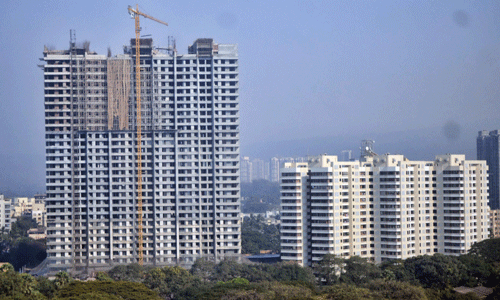Track2Realty Exclusive
 Haryana Government would like to address it as pro-farmer move, the real estate sector would like to hail it as investment friendly and others within the built environment of real estate would like to call it a step that would bring to the market more supply and hence affordability.
Haryana Government would like to address it as pro-farmer move, the real estate sector would like to hail it as investment friendly and others within the built environment of real estate would like to call it a step that would bring to the market more supply and hence affordability.
However, on a closer look the New Integrated Licensing Policy (NILP) announced by the State Government recently seems to be a calculated move that is aimed at not losing the cutting edge of Haryana in general and Gurgaon in particular on the property landscape of the Delhi-NCR region.
Real estate, after all, has been a major source of revenue for the State Government and there has been apprehension that once the Land Pooling Policy of Delhi is operational Haryana might lose its revenue. Already Haryana has been losing out on the real estate revenue.
Facts speak for themselves. The State of Haryana has been witness to a decline of nearly 5 per cent in real estate investments in the last one year, as per a study by the Associated Chambers of Commerce and Industry of India (ASSOCHAM). A majority of the projects that have suffered are in Gurgaon.
With this new policy the government has also ensured that they need not get into the thorny issue of land acquisition, which has now assumed controversial overtones and litigations.
Urban planners find a method in the madness. Architect Ashok Sinha, Director of Design Forum feels the policy is more about the adjustment and alignment with what is feasible in today’s context. According to him, the market for group housing has been worst affected in the slowdown and hence there has been pressure from various quarters to allow the transfer of land for affordable housing and townships. This will allow more developers to enter the market and also create a level playing field.
“With the present policy while those who have small patches of land and cannot afford to launch group housing at large scale can go for small affordable housing projects. Similarly, for the bigger developers who find large townships of 100 acre plus not viable can now go for smaller township projects. So, it is a win-win situation for the cash starved developers and all the fringe players in the realty segment,” says Sinha.
Developers have their own reasons to feel elated. Pradeep Aggarwal, Chairman, Signature Global calls it a forward looking step by the Haryana Government that will surely benefit the farmers and developers specially in the given market conditions. According to him, it will boost the confidence of all stakeholders with a win-win situation for everyone. The best part is the provision of Transferable Development Rights (TDR), allowing farmers or landowners with small piece of land to monetise their land at current market price. This concept will give an alternative to farmers as well as individual land owners having land less than 25 acres to obtain TDR certificate.
“This provision will be instrumental in developing projects at less than an area of 100 acres as the policy provides for a global Floor Area Ratio (FAR) between 1.0 to 1.25 for colony size of 25 acres to 50 acres and above 50 acres, respectively. These initiatives are a welcome step as they will attract developers to develop smaller projects as well where otherwise there used to be very thin margin,” says Aggarwal.
The NILP has introduced the key provision of Transferable Development Rights (TDRs) model, whereby farmers and landowners owning small pieces of land will be able to monetise their property at prevailing market prices and obtain TDR certificates. Generally, TDRs entail acquisition of land (whole or part) from the landowner in exchange for development rights, which are transferred to the landowner.
The TDR certificate can be used by the landowner on the remaining portion of the land – which the landowner retains after the acquisition – or it can be utilised on any other property, or it can even be traded to other parties for monetary consideration.
The policy states that in order to protect the interests of farmers and small landowners, the NILP puts in place the requirement of execution of a ‘TDR agreement’ between the builder and the landowner, which will be valid for a period of two years. Another significant provision is that TDRs will be transacted between the builder and the landowner at prevailing market prices.
In theory, this provision promises to ensure that the pricing of TDRs will be left to the market forces and will not be linked with any opaque pricing formula set up by the government. If implemented as has been defined this will be significant in ensuring that the process of obtaining land becomes less cumbersome with seamless and fast mechanism in place.
As per the NILP, real estate developers will be permitted to set up projects on an area of less than 100 acres. By bringing down area norms for establishing a colony from 100 acres to 25 acres, the NILP provides for a global floor area ratio (FAR) between 1.0 to 1.25 for colony size of 25 acres to 50 acres, and 1.50 for colony size over and above 50 acres.
Analysts maintain that the rules regarding the development of affordable housing on a certain percentage of every developer’s land parcel were under-served. NILP 2015 now ensures that 12 per cent of the total area of any colony licenced under this policy shall be directly transferred to the government housing board on subsidised prices for creating affordable housing and housing for economically weaker sections.
A further 10 per cent of the area shall be transferred free of cost to the government for creating community facilities. The developer shall be able to utilise the FAR against the transferred area within the existing licenced colony.
Rohan Sharma, Associate Director, JLL Research & REIS is of the opinion that the suburb of Gurgaon has again stolen a march over its neighbour Delhi. Always a hotbed of activity, Gurgaon has seen a frenetic pace of construction which has now resulted in the latest master plan encompassing newer areas, much farther away from the city centre. This, in a city which started witnessing development only over the past two decades or so, has led to town planning challenges and steep price appreciation in certain areas over others.
“The licensing mechanism of ‘first come, first serve’ – in use before this policy was introduced – has led to inefficient utilisation of land. Out of a residential-use designated sector, only 20 per cent of the net planned area of the sector was allotted for group housing licenses. This kept large lands within such areas under-utilised. To overcome such issues while also ensuring that smaller landowners do not feel crowded out while prime licenses get awarded to larger firms, the government of Haryana has come out with a new policy,” says Sharma.
As per the JLL estimates, the policy holds the potential to allow development of over 2.7 lakh new apartments in Gurgaon alone besides leaving more than 1,400 acres for the government to build low-cost housing stock. Since all the developments with Delhi Land Pooling Policy are in its conceptual stage, the Haryana Government seems to have taken the first movers’ advantage of not losing the revenue, at least in short to medium term.
It is too early to say whether Haryana will be able to compete with the proposed smart city of Delhi but more supply definitely brings competitive advantage for the homebuyers. The only rider is that the policy should not affect the farmers adversely leading to litigation and many stalled projects.





